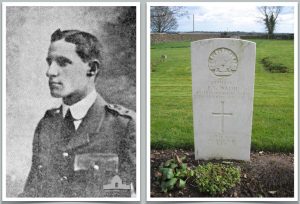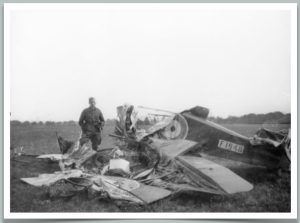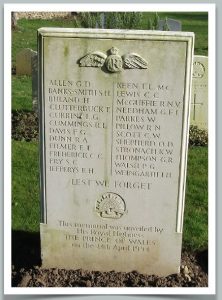8th Training Squadron, Australian Flying Corps

Patrick George Walsh was born at Cunnamulla, Queensland, Australia in 1896 and was the son of Richard and Mary Walsh of Toowoomba, Queensland.
He enlisted, at the age of 19, on 5 October 1915, prior to which he had been a bank teller.
He had also served for four years in the Citizen’s Military Force. He was assigned to the 7th Battalion of the Australian Imperial Force, as a Private, number 5213 and on 4 November was promoted to Corporal, with a further temporary promotion to Sergeant on 9 March 1916.
He embarked from Australia aboard the HMAT Star of Victoria (A16) on 31 March 1916 and landed in Egypt during April. After a short stay he left Port Said for France on 5 May.
Upon arrival he was posted to 9th Infantry Battalion and went into training at the Etaples Training Camp on 26 July 1916.
The 2 October of that year saw him sent on detachment to the School of Instruction for Officers at Oxford, where he joined No 4 Officer Cadet Battalion. He passed out from there on 25 January 1917, having qualified for a commission in the infantry and was posted as a Second Lieutenant in the Infantry Reinforcement.
His first posting in France was to 25th Battalion, Australian Infantry on 21 February 1917, followed by a transfer to 9th Battalion which was part of 3rd Brigade, 1st Australian Division on 5 June and promotion to Lieutenant followed on 20 June.
Leave in England then followed, between 3 and 20 September 1917 and he rejoined the 9th Battalion in Belgium on 21 September, which was then engaged in the Battle of the Menin Road which was part of the Third Ypres Offensive.
On 17 October 1917 he reported sick and was sent to 14th General Hospital, Wimereux, suffering from enteritis and also some dental problems.
After a short period of sick leave he returned to the 9th Battalion on 29 November 1917.
An application to join the Australian Flying Corps (AFC) was approved and he transferred to them on 19 December 1917.
From 4 January until 25 February 1918 he attended No 1 School of Military Aeronautics at Reading, learning the basics of flying. He returned to the AFC Depot at Halton Camp, Wendover, Buckinghamshire.
On 26 February and a month later was posted to 8th Training Squadron at Leighterton Aerodrome.
Here he continued with pilot training and qualified on 30 June 1918, his report stating that he was considered a keen and reliable officer and a good pilot.
On the morning of 30 September 1918 he took off from Leighterton in a Sopwith Camel fighter (serial number F1948) to practice aerial gunnery. The Camel was not an easy machine to fly but Patrick Walsh had logged over eighteen hours of solo flying in the type.
The gunnery practice involved diving down on a target, with the engine throttled down.
Having completed some successful dives, at about 11.25am he commenced another and pulled out at about 500 feet. The aircraft did not respond and went into a left hand spin and crashed to earth.
In the opinion of a witness at the Court of Inquiry Walsh had come out of the dive with a left rudder on and got into an engine spin, with insufficient height to correct.
Lieutenant Patrick George Walsh was killed instantly upon impact; he was 22 years old. He was buried at Leighterton Church Cemetery, with military honours, on 3 October 1918.
A Commonwealth War Graves Commission headstone now marks his grave.
Research by Graham Adams 11 February 2018

Debris of Sopwith Camel F1948

Memorial Plaque including Lieutenant P G Walsh
